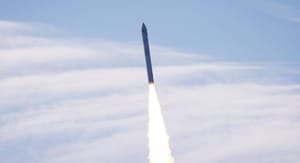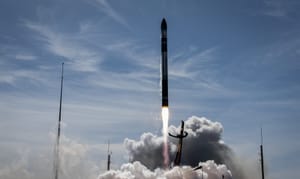
On the morning of the 29th of December 2023 at 01:07 am, in Greenwich Mean Time, a SpaceX Falcon Heavy rocket lifted off from Launch Complex 39A in Cape Canaveral, Florida. This launch was for the United States Space Force carrying the X-37B spaceplane, the first time launching on Falcon Heavy and the second time launching with SpaceX.
This is the seventh mission for the X-37B program and is believed to be on an orbit between high earth orbit and a Geocentric orbit. The mission is currently classified but is believed to spend between two weeks and one-thousand days on orbit before returning to Earth. The X-37B will land at either Vandenberg Space Force Base or the Kennedy Space Center to end its mission.
The mission is believed to be carrying several experiments onboard, one of which is NASA's Seeds-2 experiment to investigate the effects of radiation in space on plant seeds over a long-duration mission.

The boosters that supported this mission are; B1064 making its fifth flight and landing back at the launch site, B1065 also making its fifth flight and landing back at the launch site, and B1084 being expended on its first and final flight.
SpaceX also managed to finally break its own turnaround time record between launches. Another Falcon rocket, this time a Falcon 9, was launched a little under three hours later from Space Launch Complex 40 in Cape Canaveral, Florida.
The Starlink Group 6-36 mission launched at 04:01 am, in Greenwich Mean Time, carrying twenty-three Starlink satellites to low Earth orbit. The booster supporting this mission was B1069 making its twelfth flight and landing downrange on the drone ship 'A Shortfall Of Gravitas'.

What is the X-37B?
The Boeing X-37B spaceplane is an important tool in the US Space Force's arsenal when it comes to long-term on-orbit testing of new technologies. At about one-fourth the scale of the Space Shuttle, it fits neatly within the payload fairing of existing launch vehicles, and has thus far launched six times aboard ULA's Atlas V and SpaceX's Falcon 9. Much like the Space Shuttle, the majority of the craft's stowage space is contained within a horizontally-laid payload bay, with hinged doors allowing for exposure to the vacuum of space and deployment of sub-satellite payloads.

Owing to its military nature, much of what takes place from the time X-37B lifts off the ground cocooned in its launch vehicle to the moment it touches down on the runway at the end of its mission are extremely unclear, and the community must make inferences based on limited data.
The last mission for the X-37B, OTV-6/USSF-7, lasted a little over nine-hundred and eight in low Earth orbit. Not much is known about the OTV-6/USSF-7 mission other than it deployed the FalconSat-8 satellite which had five experiments onboard. OTV-6/USSF-7 began on the 17th of May 2020 and ended on the 12th of November 2022.
The previous mission for X-37B Vehicle 2 was OTV-5/USA-277 which lasted over seven-hundred and seventy-nine days in low Earth orbit. The mission is still largely classified but the X-37B is believed to have deployed three CubeSats on orbit. OTV-5/USA-277 began on the 7th of September 2017 and ended on the 27th of October 2019.
What is Falcon Heavy?
Falcon Heavy is the super-heavy lift variant of SpaceX's extremely Falcon-9 rocket. Like its lower lift variant, it is also partially reusable.
SpaceX claims that Falcon Heavy can send up to 63,800 kilograms to low Earth orbit and 26,700 kilograms to geosynchronous transfer orbit when fully expended, or 8,000 kilograms to geosynchronous transfer orbit when all three cores are reused.

The boosters are powered by nine Merlin 1D engines each burning rocket-grade kerosene and liquid oxygen to generate 771 each, 1542 tons of thrust combined, for up to two-minutes and thirty-four seconds of burn time.
The first-stage is powered by nine Merlin 1D engines burning rocket-grade kerosene and liquid oxygen to generate 771 tons of thrust for up to three-minutes and seven seconds of burn time.
The second-stage is powered by a single Merlin 1D vacuum engine burning rocket-grade kerosene and liquid oxygen to generate 95 tons of thrust for up to six minutes and thirty-seven seconds of burn time.
For recovery, each booster, and sometimes the first stage, has four grid fins and four landing legs. The boosters either land vertically on a drone ship or on a landing pad back at its launch site, landing back at the launch site causes a reduction it payload capacity.
On the pad, the rocket is 70 meters tall with the first and second stages 3.7 meters in diameter as well as the boosters, with the booster attached the rocket has a width of 12.2 meters. The fairing is 5.2 meters in diameter and tapers out from the top of the second-stage. Fully fuelled Falcon Heavy weighs approximately 1,420,000 kilograms.



